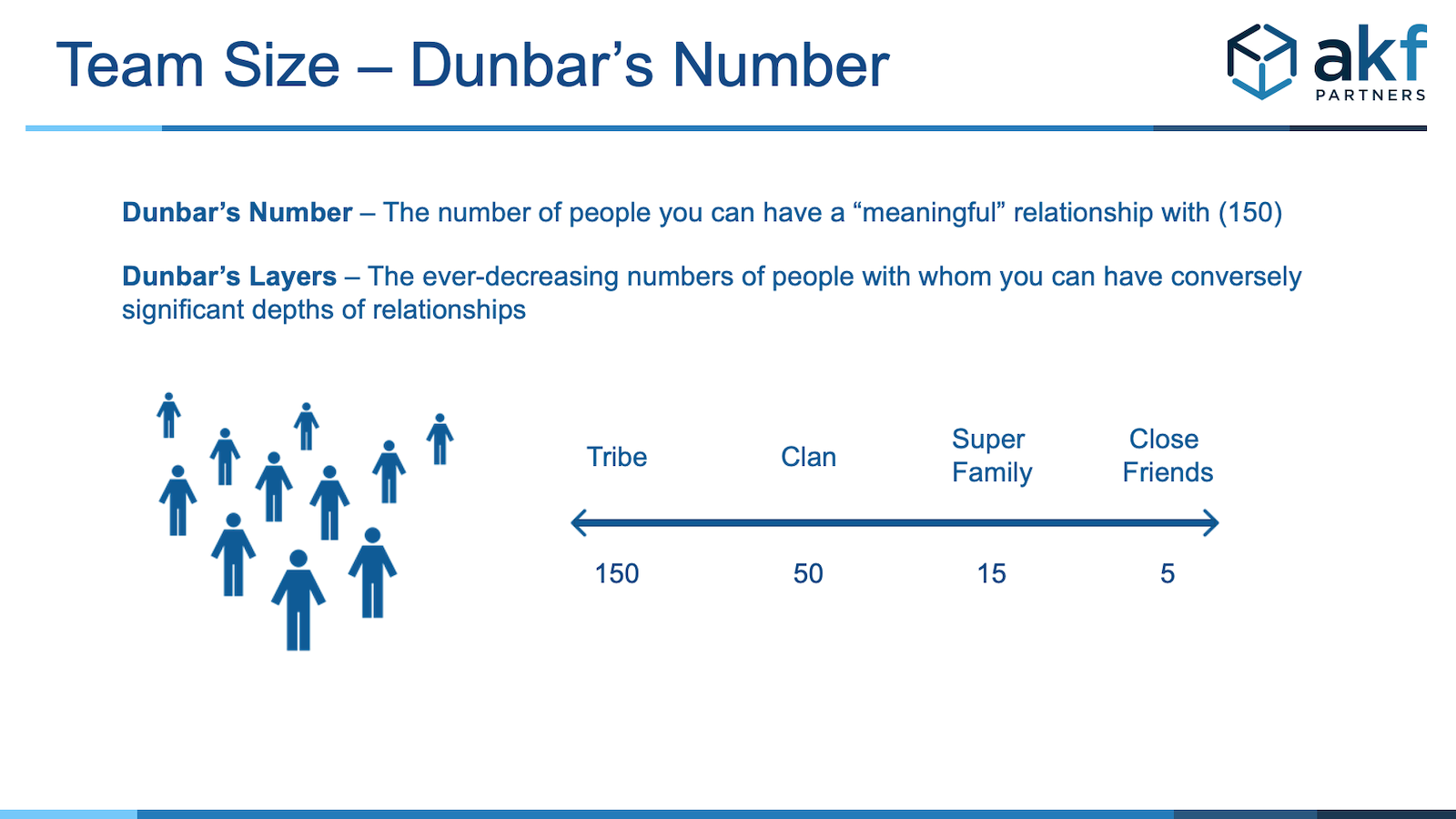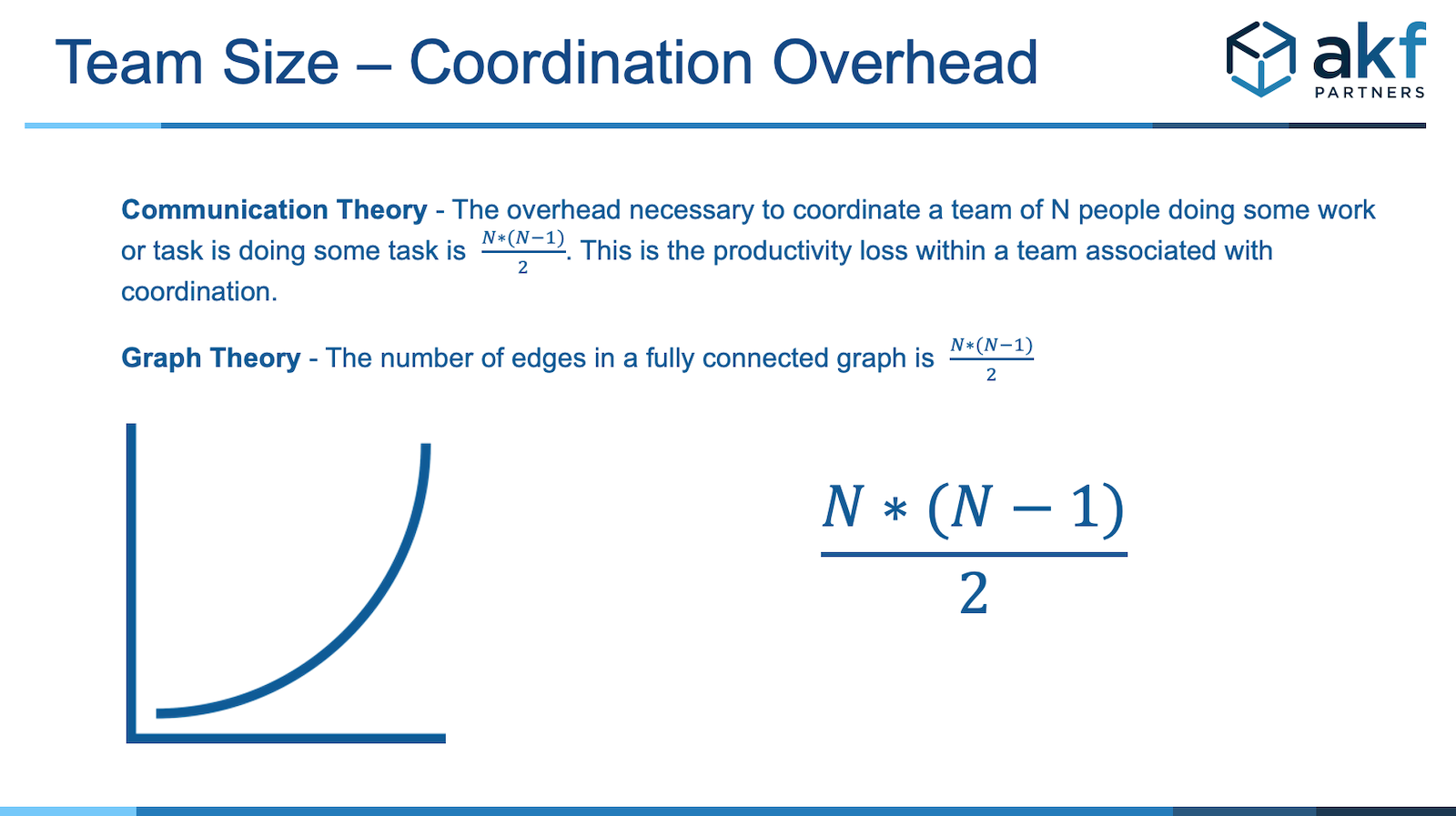How many people does it take to make a decision at your company? How many people does it take to launch a new feature for your product? To modernize and/or replace legacy functionality? To split up a monolithic application?
To answer these questions, answer these quick questions:
- How many people sit in meetings discussing options?
- How long are these meetings?
- How many meetings does it take to make a decision?
Multiply these 3 variables together - # of people, duration, and # of meetings. That is the internal cost of making a decision.
We recently had a client product manager tell us they attended 3 meetings a week with no less than 30 attendees. 30 people at $50-100 per hour. Some of these weekly meetings had 50 invitees! Every one of these meetings had an internal cost of at least $1,500. Some of these meetings had an internal cost of $3,000. And, decisions were not getting made! Good or bad, fast or slow, the decisions were not getting made.
Older companies suffer from too many meetings and too many attendees. Many small companies evolve from small agile teams making good decisions quickly. As they mature, many do not age gracefully. They become bureaucratic. Or they try to involve too many stakeholders. The worst are a deadly combination of both. Companies that have grown through M&A are very susceptible to this deadly disease.
This disease of large teams has two symptoms
The first symptom is the internal costs we discussed earlier. These internal costs are buried in payroll and consultant line items. Unfortunately, they also show up in poor morale. Poor morale can show up in GlassDoor reviews and exit interviews. This can make the organization sick.
The second symptom is worse to the enterprise. Large teams seldom make decisions quickly. The lost time is what kills companies. The time is wasted while competitors iterate away at your core market. Then these competitors take away your potential growth markets.
What does this have to do with Afghanistan?
Marty likes to use the US special forces 5 truths for the value of small autonomous teams. Marty asks 2 questions for the audience:
- Why was the US able to quickly fight off the Taliban in Afghanistan?
- Any why did the US lose ground and eventually leave?
We are not questioning the decision to go to Afghanistan. We are only identifying that the initial entry and surge was successful. The primary reason for initial success was small teams with all necessary specialists. These teams also had 2 of each kind of specialists. 2 of each specialist allowed for redundancy. Having all specialists allowed the squads to move fast. It also allowed them to make good decisions fast.
Then the bureaucracy moved in. Everything slowed down. The bureaucracy was then fighting small autonomous tribes that quickly form and reform. The US special forces left, and the large machine replaced them. The Taliban regrouped and became more like the US led special forces. The Taliban special forces wore down the machine - not to win quickly, but live long enough not to lose. The US had enough and began the pull out. Again, we are not making a political or moral statement whether the US should have been in Afghanistan in the first place. Only that the small autonomous teams with critical skills won most of the battles.
When Marty tells the Special Forces winning Round 1 of Afghanistan story, the most common response from the audience is "Yes - but they are elite well trained units!" Marty responds with with "Yes, but terrorist cells are neither elite nor highly trained, but organize similarly and get similar results."
Dunbar numbers - the Danger Zone of large Teams
Many of us have heard about the 2 pizza rule at Amazon. Jeff Bezos said
“If you can’t feed a meeting with two pizzas, It’s too large."
The rule is common in innovative organizations. These organizations understand the Dunbar numbers and communication challenges within teams. Dunbar numbers come from Robin Dunbar's studies of primates. The Dunbar numbers describe how many people 'meaningful' relationships an individual can have.

There is some math behind the Dunbar numbers. Communications theory described the complexity of coordination among individuals to complete a task. There is overhead and waste with too many people accomplishing the same task. Melvin Conway explains why a manager should not have more than 7 subordinates. Conway also observes that large teams spend too much time coordinating and not enough time doing.

In our product manager example above, 30 or more attendees is getting into the vertical part of the curve. We call this the Danger Zone. It isn't immediately dangerous, but too much exposure to this zone is wasteful. It leads to low morale. It also leads to time that competitor are using to take away your business.

Keep large meetings to a minimum. Keep those large meetings as short as possible. Split them up whenever possible. Ideal team sizes are 12 or fewer.
Find and Reduce Large Meetings
As a leader or an individual contributor, you can help reduce the number and duration of meetings. Look at your calendar from a daily, weekly, monthly level.
We recommend setting up a quick spreadsheet. In the spreadsheet, capture:
- How many people
- How long (duration)
- How often (frequency)
- Estimated time wasted per meeting
- Estimated hourly cost per attendee
We recommend using a spreadsheet for several reasons. The first is that most people cannot quickly sum more than a handful of numbers. The second is that it switches your mind from System 1 to System 2. The third is that it helps you justify why you propose eliminating attendees or meetings.
Some other pointers to make decisions
The techniques above won't give you all the tools you need to make team or organization-wide decisions faster. Here are a few more techniques that can help:
- RACI or RASCI - this helps determines who needs to attendee and who gets to make decisions. Stagnant organizations get a lift from implementing RACI/RASCI.
- Sync vs Async. This can help reduce the number of people in a live meeting by moving some communications to another channel. Know when to use synchronous communications. Keep these to a minimum.
- Time management courses - Sally McGhee and Effective Edge are good starters. These courses teach individual time management around meetings, emails, and other collaboration tools. They are best taken as a team to help decide on which tools to use for different situations. They also help identify hidden time wasters.
- Calendar plug-ins - this neat little Chrome extension for Google Calendars users adds up the number of attendees. You enter the hourly cost per attendee. It then does the simple math to tell you the opportunity cost of the meeting. Decisions is a more robust solution for running effective meetings in the Office 365 suite using Teams and Planner.
- Self Service offerings - some meetings are requests for approval or requests for work. Having self-service options for requestors will move some or all communications to asynchronous. This in turn will free up the experts needed to accomplish a task or make a decision.
Improving Morale - Lessons from Junger's Freedom
We are seeing a very large percentage of our clients moving to completely remote work. Remote work can lead to increasing the number of attendees for meetings. It can also lead to longer meetings. This will lead to the symptoms mentioned above - wasted time and low morale.
In my previous blog post, I mentioned growing up in the heart of the Dust Bowl. I recently drove there from Austin. On my drive, I listened to an Econtalk podcast that discussed the freedom of small groups. Russ Roberts interviewed Sebastian Junger for his latest book on Freedom. The first 20 minutes of the podcast covered Junger's 400 mile walk through Pennsylvania and Virginia. The more relevant part to this blog post starts right at the 20 minute mark. Sebastian provides many examples of small autonomous squads defeating much larger armies. He discusses the advantages of small, mobile tribes. He also discusses how incentives change for smaller squads or tribes.
The patterns and lessons from Freedom show up in our daily work and organizational goals. The podcast is an enjoyable listen to understand that these are timeless problems. They repeat in almost all cultures. The solutions are almost always the same. Stay small, local, and autonomous whenever possible. Avoid the tyranny of large bureaucracy whenever possible.
If you need help shifting your teams to small, full autonomous specialists, give us a call. We can tailor our training to your products and organization.